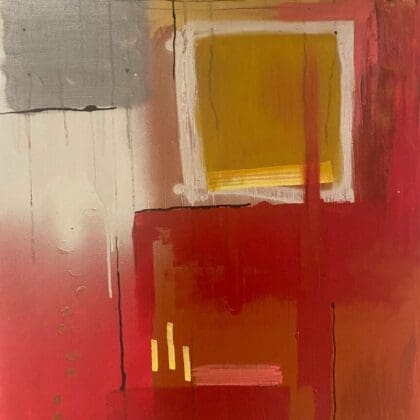As an artist, one of the most challenging decisions you’ll face is pricing your art. Price it too high, and you may feel like you’re alienating potential buyers. Price it too low, and you’re not only undervaluing your hard work but also sending the message that your art is less valuable. Finding that perfect balance is crucial for maintaining both your creative integrity and financial well-being.
In this article, we’ll break down strategies to help you price your art without selling yourself short.
1. Know Your Market
Understanding where your work fits into the broader art world is key to pricing. Ask yourself:
Are you targeting emerging art collectors or established buyers?
Is your style niche or in demand?
How are similar artists pricing their work?
Tip: Spend time researching artists who create work that aligns with yours. Check their pricing, especially for work of similar size and medium, to get a baseline. Platforms like Instagram, Etsy, or Saatchi Art are great places to start.
2. Consider Your Costs
Many artists forget to account for the actual cost of producing their work. It’s essential that you don’t only think about the materials but also the time you’ve invested in creating the piece.
Here’s what you should factor in:
Materials: Paints, canvases, brushes, or software (if digital).
Studio Costs: Rent, utilities, or equipment maintenance.
Time: How many hours did you spend creating this piece?
Example: If you spent $100 on materials, worked 20 hours on the piece, and you want to pay yourself $25/hour, the base price should be at least $600.
3. Factor in Overhead and Labor
Beyond just materials, there are many hidden costs associated with being an artist. Shipping, marketing, attending events, and creating a website are all part of your “art business” overhead.
Administrative Tasks: Emailing clients, updating your portfolio, or social media promotions.
Marketing Costs: Website hosting, advertising, or gallery fees.
Shipping and Packaging: These are especially crucial if you sell online.
Ensure your pricing structure accounts for these added costs so your final sale doesn’t leave you in the red.
4. Use a Pricing Formula
Once you understand your costs, it’s time to apply a consistent pricing model. Here’s a simple formula many artists use:
(Materials Cost + Time Cost)
×
2
=
B
a
s
e
P
r
i
c
e
text{(Materials Cost + Time Cost)} times 2 = Base Price
(Materials Cost + Time Cost)×2=BasePrice
This formula accounts for production expenses and ensures you are paid for your time. Doubling the total helps cover overheads like marketing, future projects, and gives you room for profit.
Example:
Materials: $50
Time: 10 hours at $20/hour = $200
($50 + $200) times 2 = $500
Therefore, the price of this piece would be $500.
5. Consider Your Experience and Reputation
Your price should reflect your level of experience and the demand for your work. If you’re new to the market, your prices might be lower, but if you’ve had solo exhibitions, participated in art fairs, or your work has been published, these are value-adds.
Emerging Artists: Focus on affordability to build a customer base.
Established Artists: Your track record allows for higher pricing.
Commissions and Special Works: Can be priced higher due to their bespoke nature.
Pro Tip: Be mindful of increasing your prices incrementally as you gain recognition. A sudden, dramatic price hike can alienate your loyal collectors.
6. Offer Different Price Points
One way to ensure that you’re not undervaluing your art is by offering pieces at different price points. This way, you cater to both high-end buyers and more casual collectors. For example:
Original Paintings: Priced at a premium due to the uniqueness and labor involved.
Limited Edition Prints: More affordable, but still valuable as they’re signed and numbered.
Open Edition Prints or Merchandise: These can be more accessible while still allowing fans to support your work.
By diversifying your offerings, you can reach more people without compromising the value of your original pieces.
7. Test the Market and Be Flexible
Art pricing isn’t set in stone. You can always test different price points and see how your audience responds. This could mean:
Raising prices for your next series if your current collection sells quickly.
Offering discounts or bundling artworks to move older inventory.
Adjusting pricing based on customer feedback or market trends.
It’s important to stay flexible and adjust as needed without feeling like you’re compromising your worth.
8. Set Clear Pricing Guidelines for Commissions
Commissions can be tricky to price. Since every commission is unique, it’s important to establish a transparent pricing structure in advance.
Set a Baseline: Charge a percentage upfront (30%-50%) to secure the project.
Complexity: Factor in time, materials, and client-specific requests that require extra effort.
Revisions: Clearly outline how many revisions are included and charge extra for additional requests.
Example: You could charge $500 for a standard portrait commission but add $100 for complex backgrounds or additional figures.
9. Stay Confident in Your Pricing
The biggest mistake artists make is feeling unsure about their pricing. If you don’t believe your work is worth the price tag, potential buyers won’t either.
Be Firm: Avoid negotiating or heavily discounting your work, as it can undermine your value.
Educate Your Buyers: Help them understand the effort and thought behind each piece, so they see the true value of your work.
Conclusion: Value Your Art, Value Yourself
Pricing your art is an evolving process, and while it may seem overwhelming, it’s a necessary step in establishing yourself as a professional. Keep in mind:
Research your market.
Always account for your costs and time.
Stay confident in the value of your work.
Now it’s your turn: Review your current pricing and adjust as needed to make sure you’re fairly compensated for your creativity and hard work. Start valuing your work today, and others will follow!




